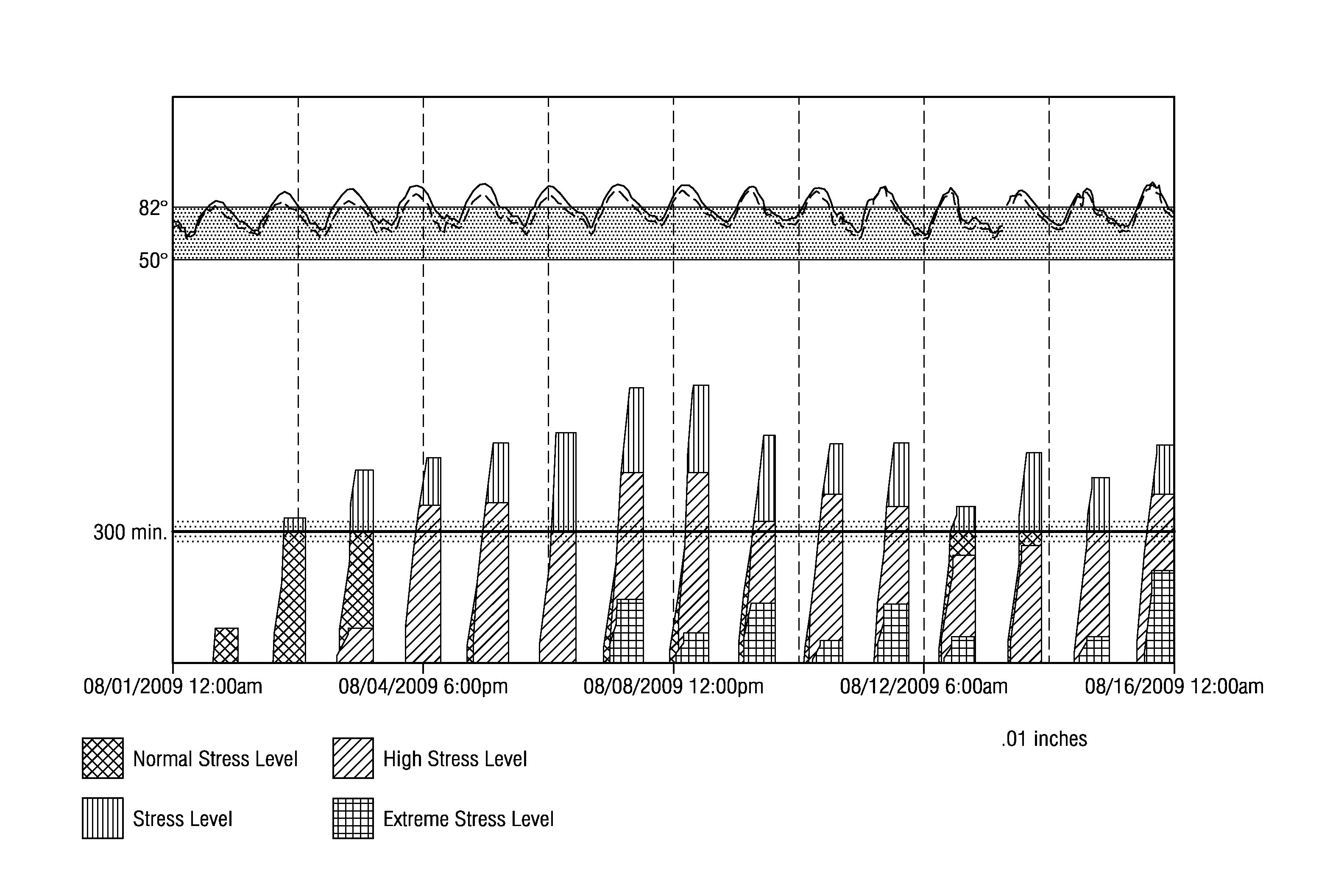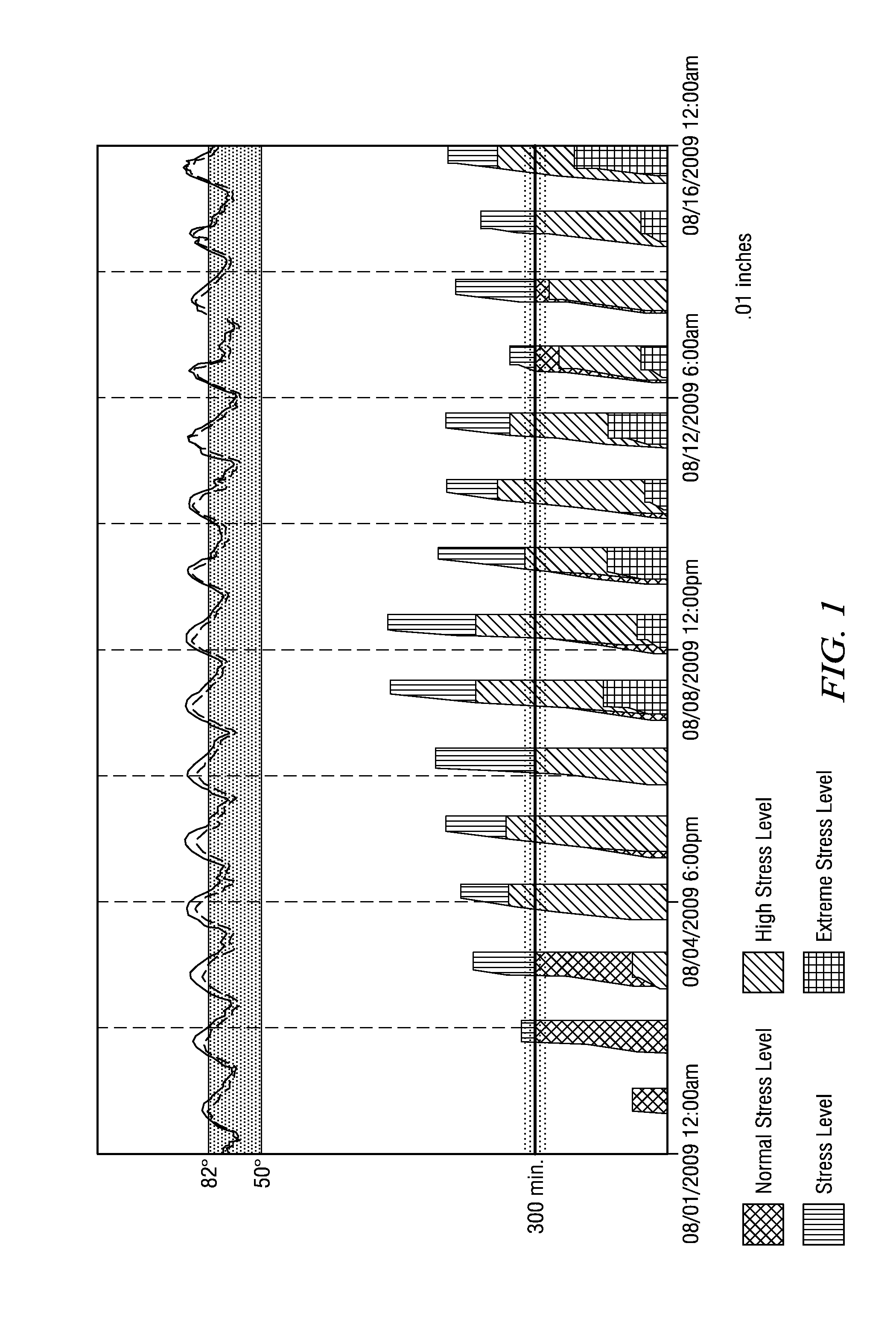Agricultural management using biological signals
a biological signal and agricultural technology, applied in the field of agricultural management using biological signals, can solve the problems of less useful as a daily or weekly crop condition indicator, less helpful as a decision-making tool, and inability to determine plant health or condition as easy, so as to achieve the desired crop effect
- Summary
- Abstract
- Description
- Claims
- Application Information
AI Technical Summary
Benefits of technology
Problems solved by technology
Method used
Image
Examples
example 1
Water Management
[0211]The inventors partnered with Texas Tech University at the research farm location on Quaker Ave in Lubbock, TX in 2011 on a water regression trial. This trial consisted of twelve cotton varieties, which were grown under nine different irrigation regimes. This water regression trial consisted of a dryland check and eight different daily irrigation amounts, including 0.04, 0.06, 0.09, 0.13, 0.14, 0.16, 0.18, and 0.24 inches. The results showed the predicted percentage of optimum yield through out the season. The results demonstrated that variations in the amount of water can be tracked using the system and method disclosed. See FIG. 12 and FIG. 13.
example 2
[0212]The plant canopy temperature was collected using an infrared temperature sensor that was located in the field with the crop. The temperature was measured and reported every 15 minutes. In Example 1, IRT sensors were placed in each plot that has a unique irrigation schedule. Ambient temperature was captured every 15 minutes by a sensor located at the Base Station. Data from sensors including the IRT, Ambient, Rain Gauge, Soil Moisture Monitoring, Irrigation Flow and Pressure Monitoring, and other data are collected remotely by the Base Station and then sent to the Smartfield Servers for processing.
[0213]The USDA had developed a standard method for identifying Optimal Plant Canopy Temperature (OPCT) for several different types of crops. The inventors used a variant method from the standard OPCT to produce the findings in Example 1
example 3
[0214]The Base Station sent the collected data to the Server via wireless communication. In Example 2, a wireless modem was used to send the data to the server and also receive confirmation that it was successfully received. Once the server received the data it was stored in a database to be used in the Smartfield algorithms and analytics to create information to aide in irrigation management decisions, crop management decisions, or comparing irrigation treatments.
PUM
 Login to View More
Login to View More Abstract
Description
Claims
Application Information
 Login to View More
Login to View More - R&D
- Intellectual Property
- Life Sciences
- Materials
- Tech Scout
- Unparalleled Data Quality
- Higher Quality Content
- 60% Fewer Hallucinations
Browse by: Latest US Patents, China's latest patents, Technical Efficacy Thesaurus, Application Domain, Technology Topic, Popular Technical Reports.
© 2025 PatSnap. All rights reserved.Legal|Privacy policy|Modern Slavery Act Transparency Statement|Sitemap|About US| Contact US: help@patsnap.com



